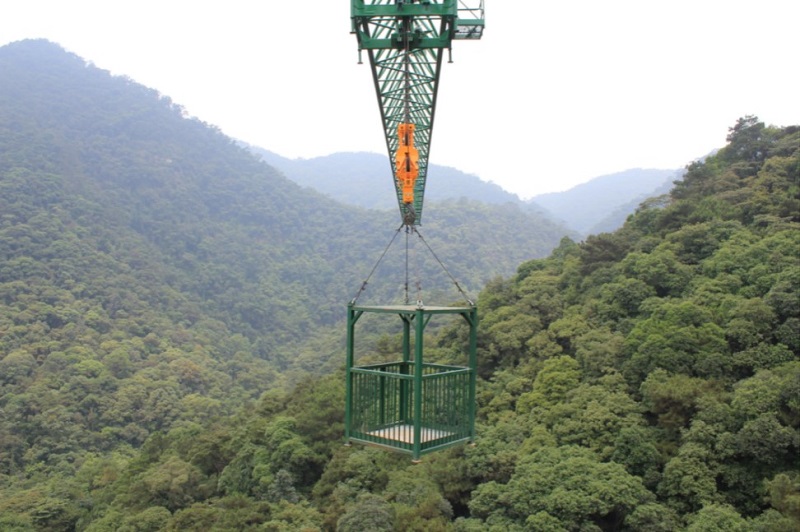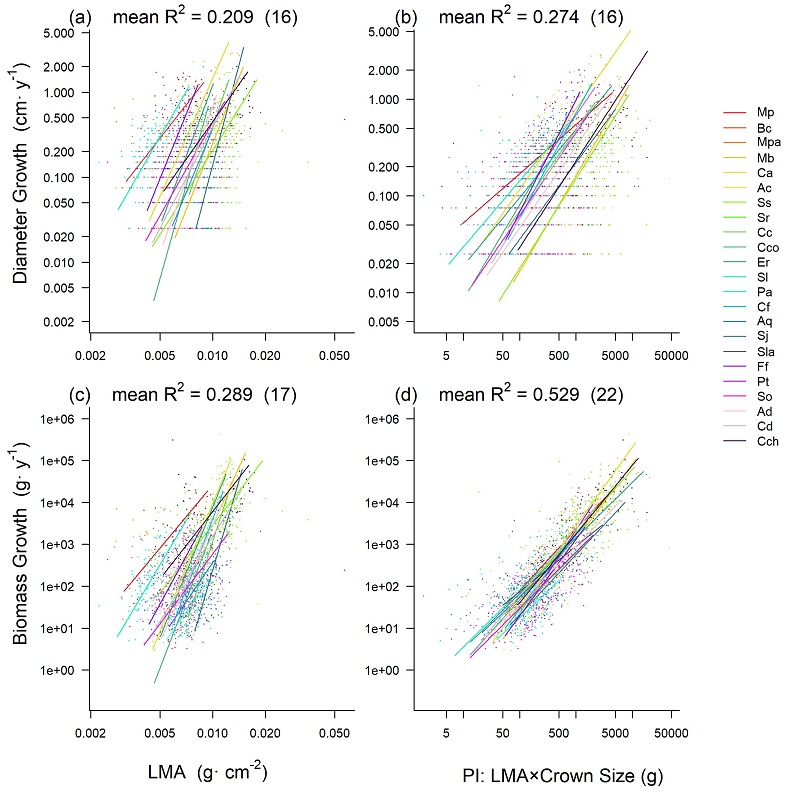Vertical Dimension: A Complementary Perspective to Interpret Niche Differentiation
The classical ecological theory posits that niche differentiation is a prerequisite for species coexistence. Natural forests exhibit distinct stratification, where the horizontal and vertical structures collectively form the community structure. Horizontal ecological niche differentiation alone is insufficient to explain the coexistence of plant species in highly diverse tropical and subtropical forests. Therefore, it is necessary to explore the potential mechanisms of niche differentiation from the vertical dimension.
In recent years, the Biodiversity and Ecological Security Research Group at South China Botanical Garden, Chinese Academy of Sciences, utilizing the 20 ha Dinghushan Forest Dynamics Plot as a research platform and employing canopy cranes, has pioneered explorations into the vertical niche differentiation within the evergreen broad-leaved forest communities from multiple perspectives: ①Utilizing physiological functional traits, the study revealed multi-layered trait variations of forest species along the vertical dimension, verifying the widespread presence of vertical niche differentiation within the community (published in Forests, with Dr. Jiayi Feng as the first author and Prof. Juyu Lian as the corresponding author). ②Through the analysis of individual-level plant functional traits, we found that intraspecific variations in leaf functional traits and individual size are important factors influencing vertical stratification and habitat adaptation of tree species, verifying the vertical effects of ecological strategies (published in Functional Ecology, with Dr. Yue Bin as the first author and Prof. Juyu Lian as the corresponding author). ③Combining leaf traits and spectral characteristics at different vertical heights of dominant tree species, the study expanded the research model of tree species classification, emphasizing the importance of the vertical dimension in forest community research (published in Remote Sensing, with Prof. Juyu Lian as a co-author, and collaborators Prof. Zhifeng Wu and Assoc. Prof. Fangyuan Yu from Guangzhou University).
The above research was supported by the National Natural Science Foundation of China and the Strategic Priority Research Program of the Chinese Academy of Sciences. This research theoretically verified the existence of vertical ecological niches among forest tree species and emphasized the importance of vertical niche differentiation in elucidating the coexistence mechanisms of subtropical forest tree species.
Links to mentioned paper:
Feng et al. Forests, 2022 https://doi.org/10.3390/f13101548
Bin et al. Functional Ecology, 2022 https://doi.org/10.1111/1365-2435.14003
Zhang et al. Remote Sensing, 2022 https://doi.org/10.3390/rs14246227
Bin et al. Journal of Ecology, 2024 https://doi.org/10.1111/1365-2745.14281
Juyu Lian, Professor, the Ecological and Environmental Science Research Center, South China Botanical Garden, Chinese Academy of Sciences, Primary Research Areas: Biodiversity and plant ecology,Contact information: lianjy@scbg.ac.cn; 020-37252981.

Figure 1. Canopy crane in the Southern Subtropical Evergreen Broad-Leaved Forest of Dinghushan.

Figure 2. Relationship between diameter at breast height (a, b) and biomass growth (c, d)
with specific leaf area (SLA) and photosynthetic investment (PI) of forest species.
File Download: